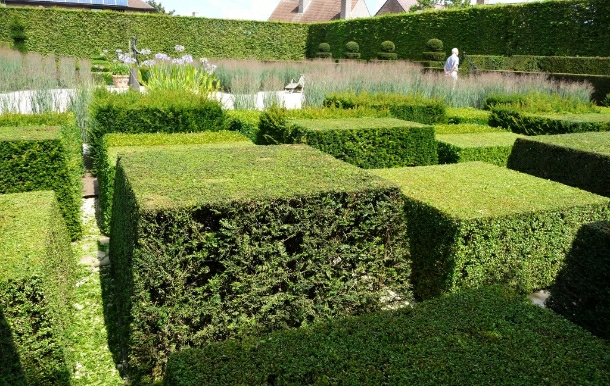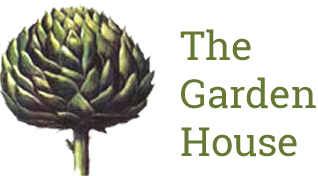GH Euro trip: Zen and the Art of Topiary Pruning!
Posted:7 September 2014
This is our last report on our Flemish adventures back in August and as we visited the fascinating Topiary Garden in Zedelgem, we thought it would also be useful to talk a little about the art of topiary.
The Topiary Garden in Zedelgem is a large privately owned town garden originally designed in 1991 by well-known Belgian garden designer Chris Ghyselen who lives and works near Bruges. Since then the considerable upkeep of the garden has been in the hands of the delightful owner who says she knows nothing about gardening! We beg to disagree – this is a truly lovely, calm and creative garden – each ‘room’ offering a different inspiration, perspective and mood.
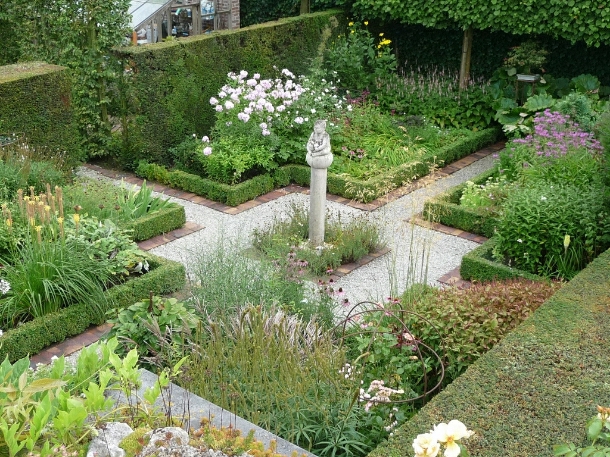
The front garden and first ‘room’ mix clipped box hedges with perennials, grasses and roses. Certainly many gardens in this area of Belgium boast very crisp front gardens of clipped box often contrasted with hostas or large-flowered white hydrangeas such as Hydrangea arborescens Annabelle. It’s a really attractive way of creating simple impactful planting, and requires little maintenance bar clipping once of twice annually (depending on the amount of topiary of course!).
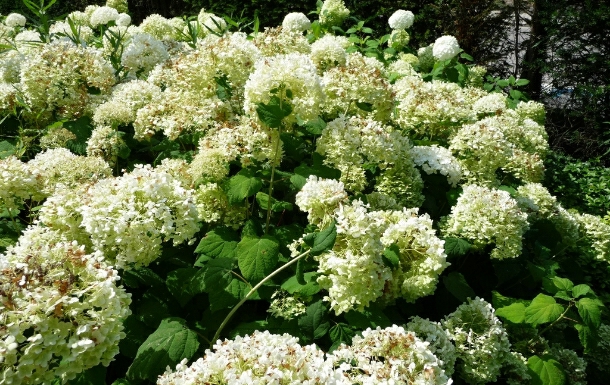
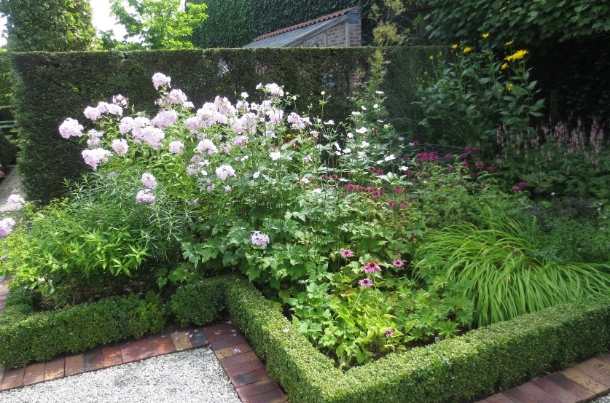
In the main garden room great blocks and chess pieces of clipped box and yew are juxtaposed with an erect slightly grey-leaved grass and ranged around open spaces and a formal pond creating a calming yet dramatic effect.
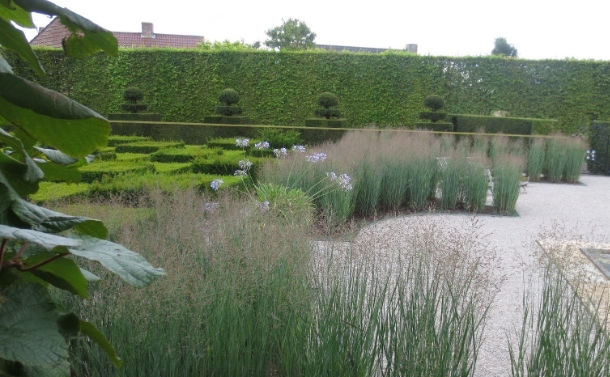
Beyond this is a much more relaxed garden with large shrubs, fruit trees and perennials around an informal pool. This space is looser in form and provides relief from the strictness of the former garden spaces.
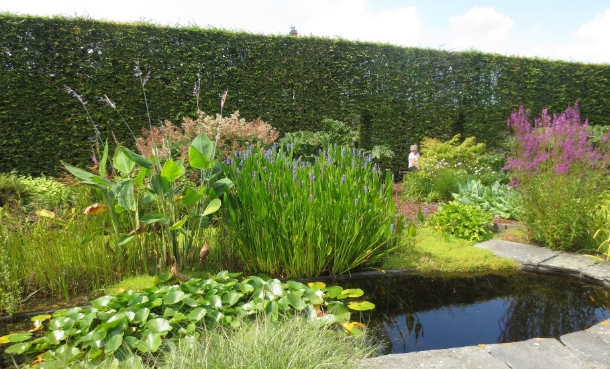
Topiary gardens first became very popular in Great Britain during the reign of the Tudors and Stuarts when knot gardens and clipped ornate shapes were introduced to gardens up and down the country. The knot garden was formed from different coloured box planted in crisscrossing patterns so that it appeared that the ribbons of hedges had been tied up in knots. Highly scented herbs were also used as hedging plants and planted in and among the gaps to give a tapestry of colour.
Traditional subjects for topiary have usually been evergreens to remain a permanent feature throughout the seasons. Typically box (Buxus sempervirens) and yew (Taxus baccata) are used, however other evergreens such as privet (Ligustrum japonicum), holly (Ilex) and Lonicera nitida can be very effective too.
Generally trees and shrubs can be bought ready-trained from specialist nurseries; these save time and effort but can be expensive. If you have time and a great deal of patience you can train and grow your own – or use a topiary frame to give you a guiding hand.
Traditional topiary forms include cones, balls, half-standards, cubes, pyramids and spirals, but more avant-garde shapes can also be achieved such as cloud forms and of course a wide range of animal and bird shapes.
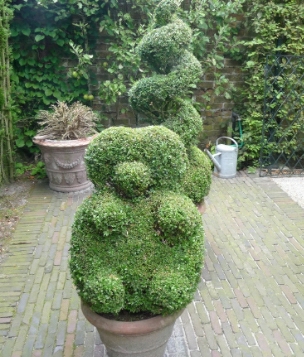
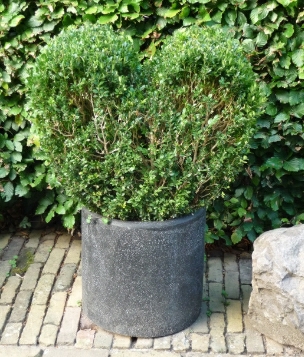
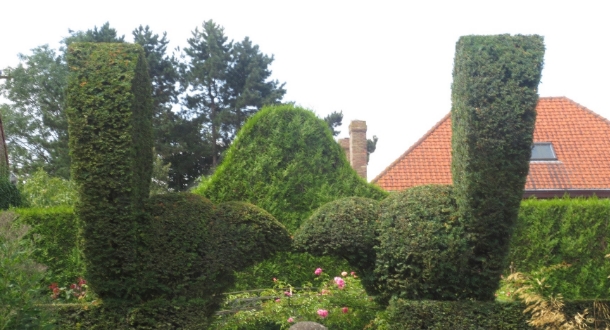
More information about clipping, rejuvenating, using frames, cloud pruning, box blight etc can be found on the RHS website.
(The Topiary Garden, privately owned by Dr Christiaen Ludovitch; Snellegemsestraat 42, B-8210 Zedelgem, Belgium)
